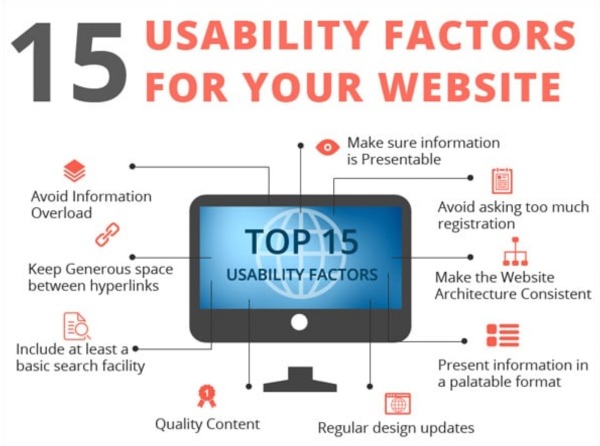Usability – Why is it so important for a company’s website?
A company’s website is usually the only point of contact the company has with someone who is interested in them. As such, businesses depend entirely on their web presence in order to achieve their online goals, whether they are commercial or not.
This scenario means that the user of a company’s website will be able to formulate a judgment about that company based on how they perceive that website. If a company’s website is usable, then it is very likely that a user will achieve their goal by using. This in turn will be an active contribution that will help that company achieve its own goals.
Now, let’s take this successful scenario to the level of 2,100 million Internet users, and we can understand why website usability is essential for any business with a web presence.
Usability – Corporate Goals and Business
A company typically establishes its usability goals through a combination of user profiling (or targeting), analysis of key tasks and overall business objectives. These may be coupled with additional information such as marketing information, competitive analysis, technical support groups, etc. Because of the diversity of these sources, a considerable list of goals can be produced.
The company must then qualitatively and quantitatively refine and prioritize its goals in order to determine its usability goals.
These objectives are the set of high-priority goals that must be implemented for the company to achieve the necessary user performance and criteria satisfaction. The degree to which the company’s website is successful then depends on the balance of its user interface between the company’s usability goals and those of its users. Of course, this can sometimes be a difficult task as these goals can diverge on the usability aspects of the same website.
What makes a company’s website usable?
The answer to this question depends largely on the nature of the site and the company’s objectives. It is generally accepted that websites that offer the user useful and navigable information in a well-structured layout are likely to retain users who access them and also generate more loyal visitors.
However, these generic assumptions are open to debate. For example, the popular, but still unofficial, three-click rule, which aims to guide website content and navigation, states that all information in a website should be accessible in no more than three clicks. Some authors like Zeldman support the reasoning of the three-click rule because they claim that it is based on the same way of thinking used by visitors. Thus, adhering to this rule helps in developing intuitive, logical and well-structured websites.
Despite this, authors such as Nielsen and Loranger claim that in their tests, the user’s ability to locate products in an e-commerce website increased by 600% after changing the design so that it was accessible by 4 clicks instead of 3.
Thus, they concluded that adhering to the three-click rule usually results in obscure and overloaded navigation. Designers try to make everything reachable in three clicks, which sometimes causes more difficulty in choosing clickable links, whereas going through an extra link sometimes gives users a more intuitive navigation.
According to Nielsen and Loranger, the 3 most important characteristics that distinguish a usable website are simplicity, naturalness and ease of use. When usability is implemented in collaboration with good web design features, especially visual appeal, the result is a website that positively affects user behavior and the trust the user has in the company that owns the website.
This trust is also affected by the user’s perceived usability, which is, the user’s perception of the usability of a website before actually using it. Furthermore, this measure has been shown to be highly correlated with the actual usability of the website.
What is the effect of a usable website?
Researchers like Safavi have shown that websites with a user-friendly design and an easy-to-use interface increase user satisfaction. At the other end of the spectrum, researchers like Montero have shown that websites that violate usability conventions confuse users, resulting in lost revenue for the companies that publish these websites.
The research also shows that the importance of usability of a website increases depending on the competition that exists within the environment of that website. Thus, operating a website in a highly competitive environment is more likely to lose potential customers if its usability is poor; this statement being less true for a website that operates in a less competitive environment.
In conclusion, we would like to quote Jakob Nielsen for whom “the user experiences usability first and will pay later”, which means that users are always one click away from leaving your website if they do not find it usable!

